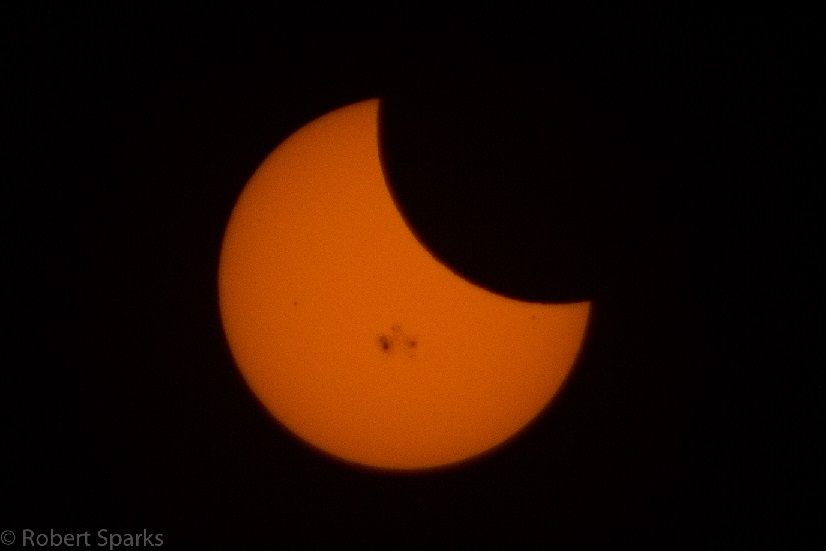On 25 October 2022, there will be a partial solar eclipse over most of Europe, northern Africa, the Middle East, and western Asia. While not nearly as spectacular as a total solar eclipse, if you are in the area where the eclipse will be visible, it is certainly worth observing.
Since the sun is never completely obscured, it is dangerous to look directly at the sun. However, you can view it indirectly by projecting it, as shown in this picture. You can use a pair of binoculars or telescope to do this. You do not look through the binoculars or telescope. Instead, you point the binoculars at the sun, and point the other end at the ground or other flat surface. You will then see a projected image.
While this picture shows a relatively expensive telescope, this is not necessary. A good image can be projected with even a pair of toy binoculars. See the NASA website for more ideas on viewing the eclipse. You can also view our page from the 2017 U.S. eclipse.
The eclipse will be visible first over Greenland at 08:58 UTC, and will end over India at 13:02 UTC. The peak eclipse will be visible over Siberia at 11:00 UTC. To find the exact times for your location, use this interactive map.
Those with an interest in radio will want to experience how the partial eclipse affects radio propagation. During the 2017 eclipse, I found that there was a very noticeable effect on propagation on 40 meters. Those with just a mediumwave or longwave receiver will probably discover that stations normally heard only at night can be picked up during the day, due to the eclipse.
Solar eclipses and lunar eclipses come in pairs, about two weeks apart. The corresponding lunar eclipse will be visible in North America on November 7-8.


